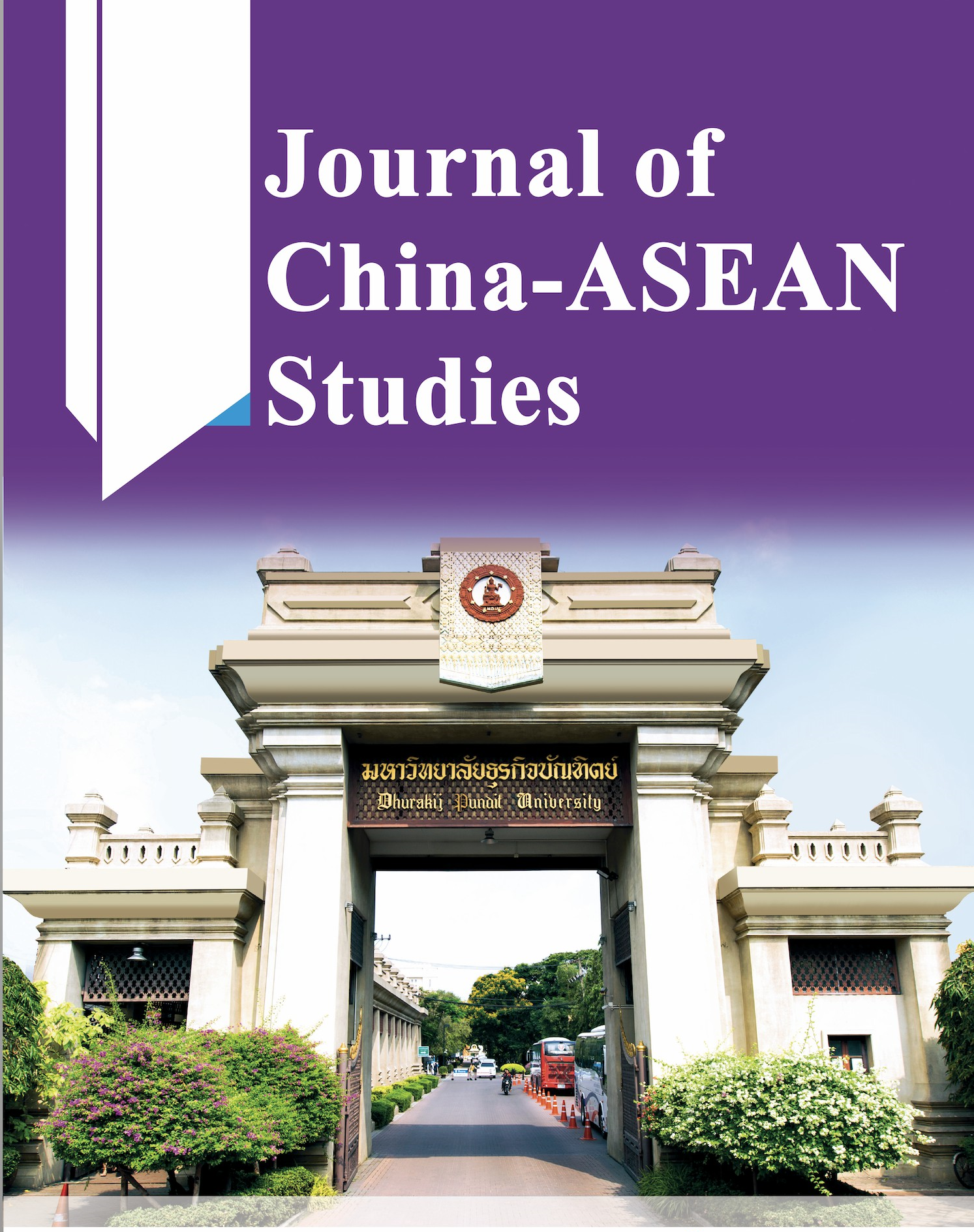Study on the Interaction between Regional Security Norms and National Form in Southeast Asia: An Intervention Cost Analysis
Keywords:
ASEAN Norm, Safety Regulation, State PatternAbstract
Normative research has always been a hot spot in international politics. Norms can not only drive the change of regional order, but also change the construction of national form in the region. Among them, ASEAN norms can be taken as a typical representative. ASEAN was established in the 1960s as a security norm practice in Southeast Asia, trying to change the cold war pattern in Southeast Asia after World War II. However, on the one hand, ASEAN norms established the form of sovereign states in Southeast Asia, on the other hand, they consolidated the relations among Southeast Asian countries in the pattern of the cold war. This paper attempts to start from the national form and security norms of Southeast Asia, and then explore the consequences of the evolution of the national form of Southeast Asia. Internally, ASEAN norms and the cold war pattern promote the stability of the national construction of Southeast Asian countries but limit their autonomy of free development. Externally, ASEAN norms ensure that its member states are free from the influence of major powers, so that Southeast Asia can form a security community. On the whole, Southeast Asian countries have experienced a series of processes from “colony” to “sovereign state”, and the interaction between Southeast Asian national construction and ASEAN norms has gradually played a role. This interactive process illustrates the characteristics of regional and national development in Southeast Asia and promotes the balanced strategy of ASEAN integration.
References
艾伦· 托马斯。(1981)。东南亚国家联盟。(郭彤译)。新华出版社。(原著出版于1979年)
曹云华。(2011)。东南亚国家联盟:结构、运作与对外关系。中国经济出版社。
达尔安芬。(1982)。东南亚的地区组织与秩序。麦克米伦出版有限公司。
高夏克里斯朵夫。(2018)越南:世界史的失语者。联经出版社。
贺圣达、马勇 。(1997)。走向21世纪的东南亚与中国。云南大学出版社。
黄其松 。(2010)。制度建构与民族认同:现代国家建构的双重任务。云南行政学院学报,6,36–40。https://oversea-cnki-net.eu1.proxy.openathens.net/KCMS/detail/detail.aspx?dbcode=CJFD&dbname=CJFD2010&filename=YNXY201006003&uniplatform=OVERSEAS_EN&v=tYMrvt1Rt9naeW4jeYGVSkxpfT7XrTMMj1R88zONcTUC8Ts5g7_BQhTqSIzwDqwn
霍尔D. G. E.(1982)。东南亚史。商务印书馆。
江帆。(2013)。东盟安全共同体变迁规律研究—历史制度主义视角下阿米塔·阿查亚教授商榷。中国社会科学出版社。
姜帆。(2020)。英帝国的崩溃与缅甸模式:二战后英国对缅甸的非殖民化决策考察。中国社会科学出版社。
卡尔雷蒙德。(2009)。西班牙史。中国出版集团东方出版中心。
考尔曼。(1978)。菲律宾与东南亚。拉迪安出版社。
李春霞。(2017)。从国家利益分析越南的东盟政策。中国社会科学出版社。
李东纥。(2014)。治理视角之下的东亚区域化:以东盟为案例的分析。中国政法大学出版社。
李美贤。(2005)。印尼史:异中求同的海上神鹰。台湾三民书局。
李勤。(1999)。东南亚经济概论。云南民族出版社。
梁英明、梁志明。(2005)。东南亚近现代史。昆仑出版社。
梁志明。(2010)。东南亚史。人民出版社。
廖少廉、陈雯 、赵洪 。(2003)。东盟区域经济合作研究。中国对外经济贸易出版社。
林华山 、罗振建。(2019)。新型国家形态的独特道路—以统一战线为视角。理论与改革,6。
林若雩。(2016)。东协共同体的建构与成立:“4C安全文化”之理论与实践。三民书局。
刘念波。(1999)。试论近现代东西方殖民主义对东南亚历史的影响。徐州师范大学学报(哲学社会科学版),3, 106–108.https://oversea-cnki-net.eu1.proxy.openathens.net/KCMS/detail/detail.aspx?dbcode=CJFD&dbname=CJFD9899&filename=XZSB199903030&uniplatform=OVERSEAS_EN&v=U4Kpvow94VfD9zrPISIy-jDJrD8fMYKG2aZV9OYUW1-OPXLmI6x-c5EjSZQSEeGl
刘舒天 。(2016)。论东盟规范对东亚地区主义的影响。[硕士学位论文]。国际关系学院。https://oversea-cnki-net.eu1.proxy.openathens.net/KCMS/detail/detail.aspx?dbcode=CMFD&dbname=CMFD201701&filename=1016253055.nh&uniplatform=OVERSEAS_EN&v=LAO3uyRrmZCUC3h3-55-TcolCOc-D6InhZ3DSO7KAybhxIW_-k0bAJ-_MXiU2gZH
卢光盛。(2008)。地区主义与经济合作。上海辞书出版社。
貌丁昂。(1983)。缅甸史。云南省东南亚研究所。
任剑涛。(2015)。驾驭权力与现代国家建构。争鸣与探索,2,8。96-105+193https://oversea-cnki-net.eu1.proxy.openathens.net/KCMS/detail/detail.aspx?dbcode=CJFD&dbname=CJFDLAST2015&filename=SUTA201502021&uniplatform=OVERSEAS_EN&v=SwDF5Bm72VTbJ-hn-fmtYgwd5VrNcdK3EQUMF1x7-vLY2WmDuCUorW9jvk6szRIw
塞韦里诺鲁道夫。(2012)。东南亚共同体建设探源:来自东盟前任秘书的洞见。社会科学文献出版社。
斯塔夫里阿诺斯L. S.(2006)。全球通史:从史前到21世纪。北京大学出版社。
宋少军 。(2017)。冷战时期东南亚地区安全复合体:产生、演进与建构。国际安全研究,6,108–128.
王士录、王国平(2003)。从东盟到大东盟:东盟30年发展研究。世界知识出版社。
王士录、王国平。(2015)。东盟与亚太东盟的发展趋势对亚太的影响。当代世界出版社。
王正毅。(1997)。边缘地带发展论:世界体系与东南亚发展。上海 人民出版社。
王子昌。(2011)。东盟外交共同体:主体及表现。时事出版社。
王子昌、郭又新(2005)。国家利益还是地区利益:东盟合作的政治经济学。世界知识出版社。
韦明。(2005)。民族主义与地区主义的互动:东盟研究新视角。北京大学出版社。
萧文轩、顾长永与林文斌。(2020)。柬埔寨的政治经济变迁1953-2018。联经出版社。
肖斌 。(2009)。双边与多辩:东盟与欧盟区域间主义关系的演变。南洋问题研究,2,17-23。https://wenku.baidu.com/view/313de328b91aa8114431b90d6c85ec3a86c28b5c.html
张启威 、左光兵 。(2012)。 国家建构:理论始源与中国研究的局限。理论前沿,3,10-13。https://oversea-cnki-net.eu1.proxy.openathens.net/KCMS/detail/detail.aspx?dbcode=CJFD&dbname=CJFD2012&filename=LDKI201220006&uniplatform=OVERSEAS_EN&v=x-MKi9k3cgh-RJPDJ1XAf1DtQCZOITpN0n3SiFwyhp6Q7vBdrJGkUCbc5-G2A2A4
赵晨。(1994)。东南亚国家联盟:成立发展同主要大国的关系。中国物资出版社。
郑先武。(2009a)。安全、合作与共同体:东南亚安全区域主义理论与实践。南京大学出版社。
郑先武。(2009b)。安全、合作与共同体:东南亚安全区域主义理论与实践。南京大学出版社。
郑先武。(2014)。区域间主义治理模式。社会科学文献出版社。
郑先武。(2015)。万隆会议与东南亚区域主义发展。世界经济与政治,9。31-58。https://wenku.baidu.com/view/e099aca1bc23482fb4daa58da0116c175e0e1e6d.html
庄嘉颖。(2020)。建国与国际政治:近代中印泰主权国家建构比较史 1893-1952。季风带文化出版社。
Acharya, A. (2001). Constructing a Security Community:ASEAN and the Regional Order. Routledge.
Beeson, M. (2009). ASEAN’s ways:still fit for purpose. Cambridge Review of International Affairs, 22(3), 333–343.Bhattacharjee, G. P. (1976). Southeast Asia Politics: Malaysia & Indonesia. Minerva Associates.
Easton, S., & Stubbs, R. (2006). Is ASEAN Powerful?: Neo-Realist Versus Constructivist Approach to Power Southeast Asia. The Pacific Review, 19(2), 135–156.
Hette, B. (1999). Globalism and the New Regionalism.
Macmillan.Hsueh, A. (2016). ASEAN and Southeast peace: national building economic performance,and ASEAN security management. International Relations of Asia-Pacific, 16(1), 27–66.
Indorf, H. (1984). Impediments to Regionalism in Southeast Asia: Bilateral Constrains among ASEAN States. Institute of Southeast Asian Studies.
Jorgensen-Dahl, A. (1982). Regional Organization and Order in South-East Asia. The Macmillan Press.
Kawasaki, T. (2006). Neither Skepticism nor Romanticism:The ASEAN Regional Forum as a Solution for the Asia-Pacific Assurance Game. The Pacific Review, 19(2), 219–227.
Leifer, M. (1990). ASEAN and the Security of South-east Asia. Routledge.
Mansfield, E., & Milner, H. (1997). The Political Economy of Regionalism. Columbia University Press.
Narine, S. (2002). Explaining ASEAN:Regionalism in Southeast Asia. Eastern University Press.
Nischalke, T. (2002). Does ASEAN measure up? Post- Cold War diplomacy and idea of Regional Community. Pacific Review, 15(1), 89–117.
Palmer, N. (1991). The New Regionalism in Asia and Pacific. Lexington Books.
Palmujokei, E. (2001). Regionalism and Globalism in Southeast Asia. Palgrave Macmillan.
Price, M. (2021). Norm erosion and Australia’s challenge to the rules-based order. Australian Journal of International Affairs, 75(2), 161–177. https://doi.org/10.1080/10357718.2021.18759
Solidum, E. (2003). The Politics of ASEAN:An Introduction to Southeast Asian Regionalism. Eastern University Press.






